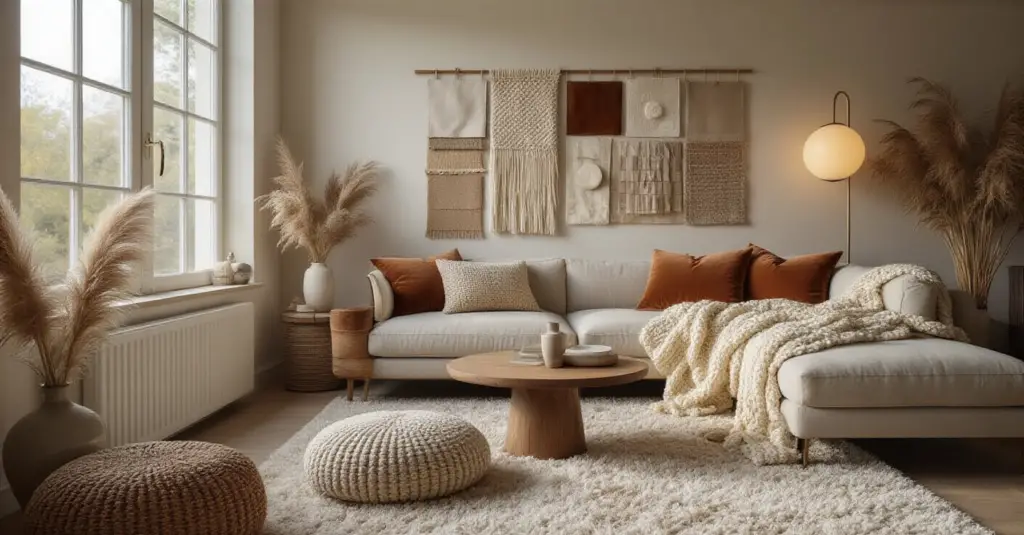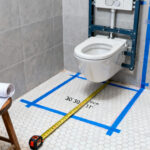You know what people always ask me? “Piper, how do I have a beautiful, cozy living room with a dog that thinks muddy paws are an accessory and a cat whose life mission is to destroy my sofa?” They think they have to choose between a stylish home and a happy pet. And that, right there, is the biggest myth in design.
The secret isn’t picking one over the other. It’s about designing a space where your pet’s happiness is the ultimate measure of comfort. Because let’s be honest, you’re never going to feel truly relaxed on your chic new sofa if you’re constantly stressed about your German Shepherd getting near it. A truly cozy space is one where every family member—two-legged or four—can let their guard down. It’s about durable fabrics, safe choices, and clever layouts that work for your animals, not against them.
I learned this the hard way years ago, working as a vet tech. I saw so many avoidable accidents caused by things in the home—toxic plants, dangling blind cords, tippy furniture. When I started designing, I couldn’t unsee it. So I made it my mission to create homes that are not just beautiful, but are true sanctuaries for the animals we love. Forget the corporate speak and the pristine, unlivable showrooms. Here’s how you can create a space that’s magazine-worthy and perfectly pet-proofed.
Cultivating the Cozy Foundation: Planning Your Perfect Retreat (Part 1)
Before you buy a single pillow, we need a plan. A great cozy living room doesn’t happen by accident. It’s about thinking through how you and your pets actually live in the space. This is where we lay the groundwork for a room that feels intentional, safe, and deeply comforting for everyone.
1. Define Your Personal Cozy Aesthetic with a Vision Board
Before you even think about paint swatches, let’s talk about a vision board. I know, it sounds a little fluffy, but trust me on this. It’s your roadmap. But instead of just pinning pictures of beige sofas, I want you to think about your pet. Do you have a cat who’s a secret mountain climber? Pin images with cool, sturdy vertical shelves. A dog who loves to sunbathe? Your board should be filled with sunny spots and floor cushions.
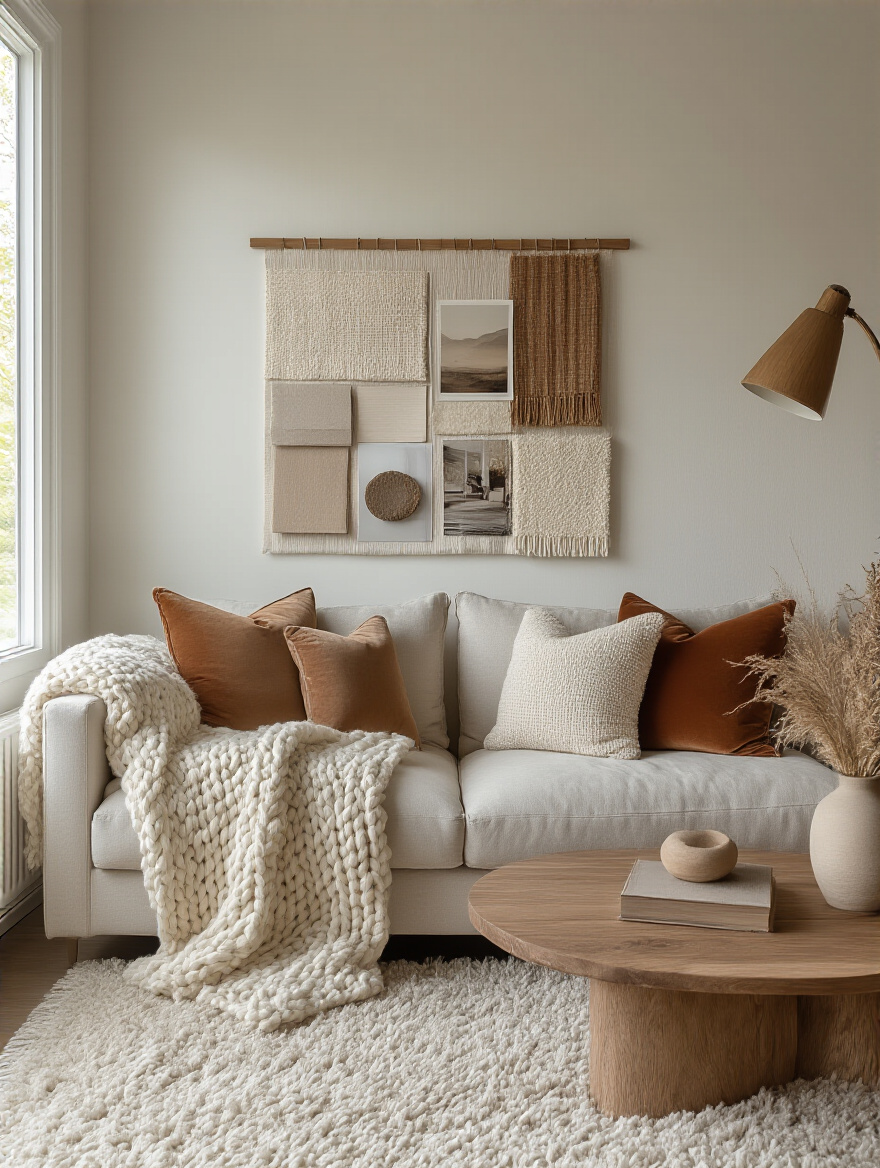
This isn’t just about making things pretty; it’s about building a space around your family’s real habits. A vision board stops you from making impulse buys that don’t fit your life, like a delicate silk rug when you have a potty-training puppy. It forces you to be honest about your needs, which will save you so much money and heartache. Think of it as a blueprint for a life you love, furry chaos and all.
Making these choices upfront will help you build a cohesive room that works for everyone.
2. Assess Room Layout for Optimal Flow and Intimacy
Your room’s layout is more than just where the sofa goes. It’s about creating “zoomie pathways” for your energetic pup and ensuring your senior cat has an easy, step-free route to their favorite napping spot. Push all the furniture against the walls, and you get a weird, empty void in the middle—I call it the “bowling alley” effect—which feels formal and impersonal.
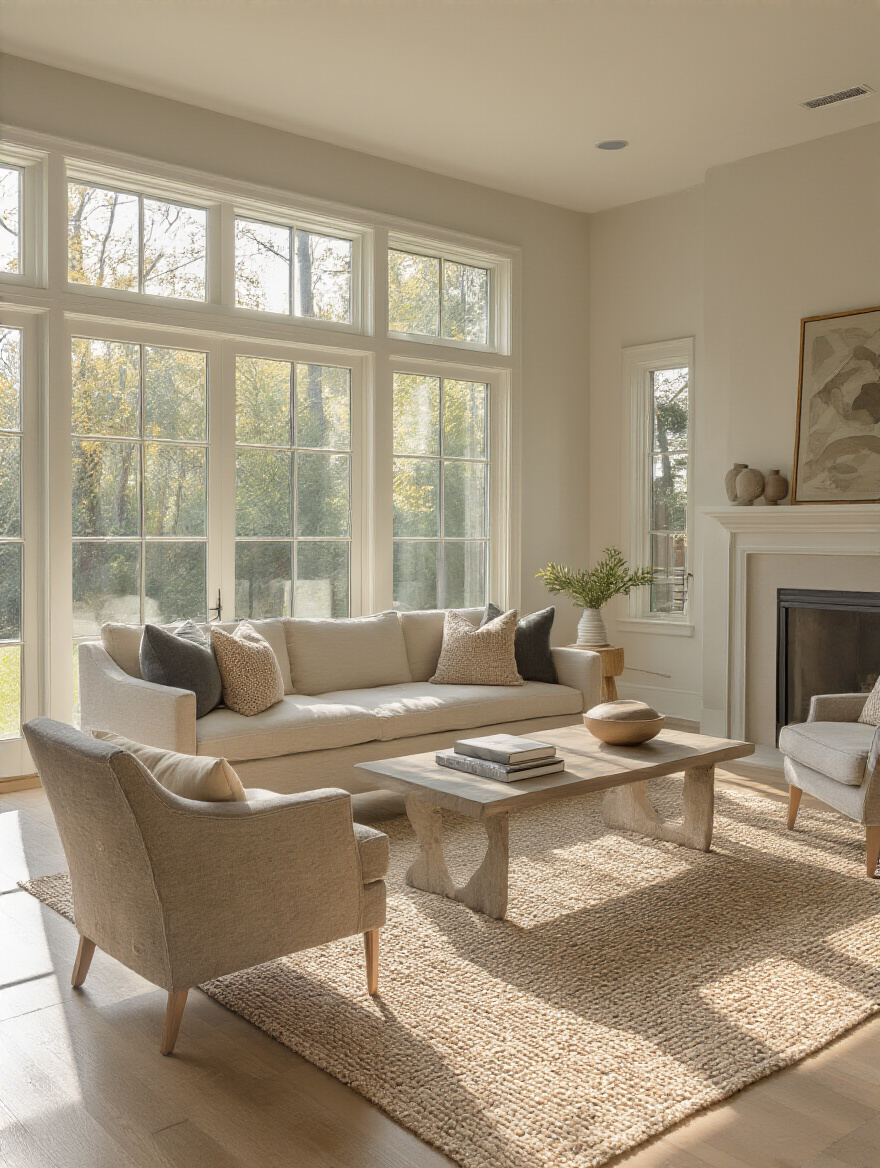
Instead, pull your seating away from the walls to create an intimate conversation area. When arranging, think about your pets’ traffic patterns. Keep pathways clear so your dog doesn’t knock over a lamp with a happy tail wag. And please, for the love of all things holy, choose coffee tables with rounded corners. I’ve seen enough bruised shins and wagging tails whacked on sharp edges to know they’re a menace. A good layout makes a room feel bigger, safer, and infinitely more welcoming.
With a smart layout, you can guide both people and pets through the space effortlessly.
3. Master the Art of Layering Textures for Inviting Depth
Texture is the secret sauce of cozy. It’s what makes you want to curl up and stay a while. But when you have pets, “texture” can feel like another word for “scratching post.” The trick is choosing the right textures. Forget open-loop fabrics like boucle or loose knits—they’re basically a party invitation for cat claws. A single pull and they’re ruined.

Instead, think of durable, tightly woven fabrics like microfiber, canvas, or even performance velvet. These materials are harder for claws to sink into. Layer these with a chunky, washable knit throw blanket and a faux fur pillow. For rugs, a low-pile wool is fantastic; it’s naturally stain-resistant and durable. The goal is to mix materials—a smooth leather-look chair (the kind you can wipe clean), a soft chenille sofa, a rough-hewn wood table, and a plush rug—to create a feast for the senses that can actually stand up to daily pet life.
This multi-sensory approach is what elevates a room from just “decorated” to deeply, tangibly comfortable.
4. Choose a Warm, Inviting Color Palette for Walls and Textiles
Color is emotional. Warm, earthy tones like terracotta, olive green, taupe, and creamy whites feel like a hug. They ground the space and make it feel instantly safe and serene. Cool grays and stark whites can feel sterile and cold unless you work really hard to warm them up with other elements.
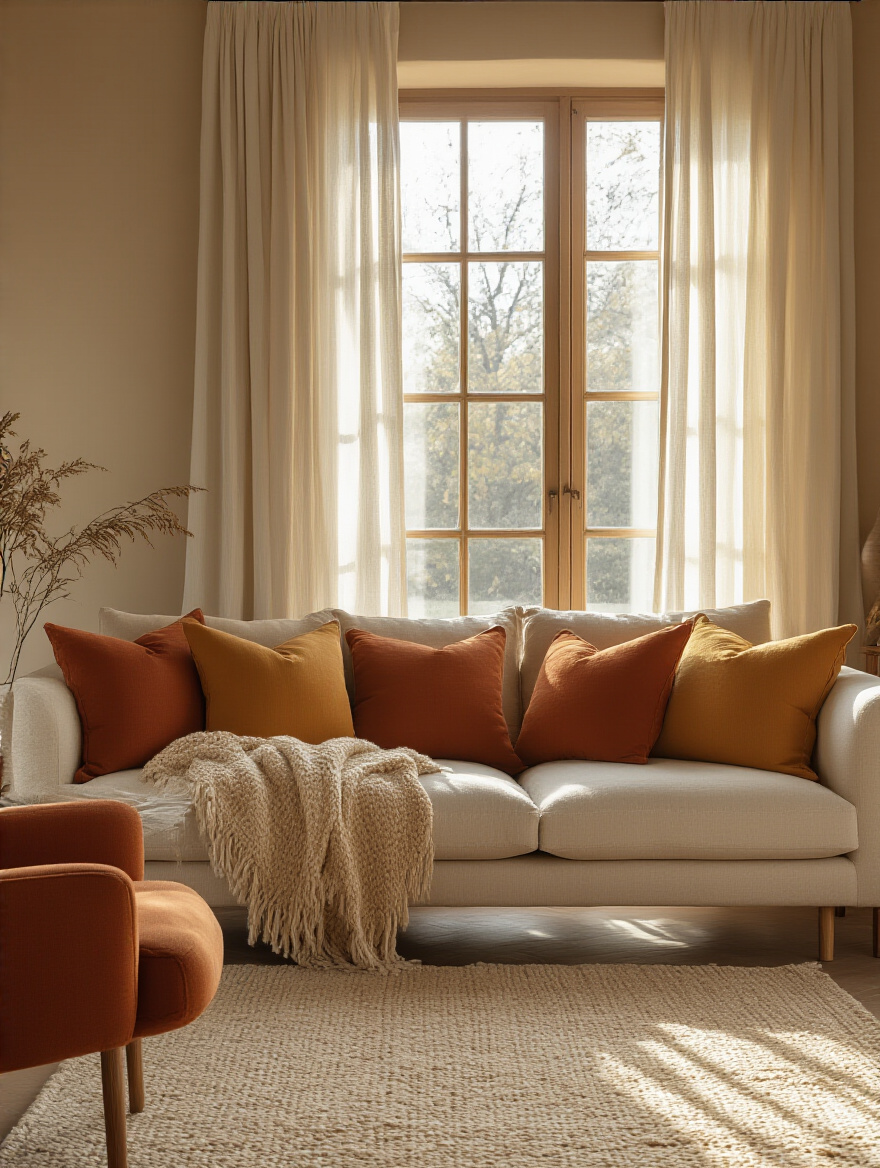
From a practical pet-parent perspective, a multi-tonal palette is a gift. A solid color sofa—especially a light one—shows every single piece of fur and every tiny smudge. But a nice heathered gray, a warm taupe, or a patterned fabric? It hides a multitude of sins. You can even choose colors that complement your pet’s fur. It sounds silly, but if you have a golden retriever, a golden-hued rug will look cleaner for longer. It’s about being smart, not just stylish.
This warm and forgiving palette sets a soothing backdrop for the rest of your design.
5. Prioritize Comfort: Invest in a Plush Sofa or Primary Seating
Your sofa is the king of the living room. If it isn’t comfortable for everyone, what’s the point? And by everyone, I mean your dog who thinks it’s his personal bed. This is the one place I tell clients not to skimp. Invest in a high-quality sofa with a sturdy frame (kiln-dried hardwood is the gold standard) and comfortable, durable cushions.
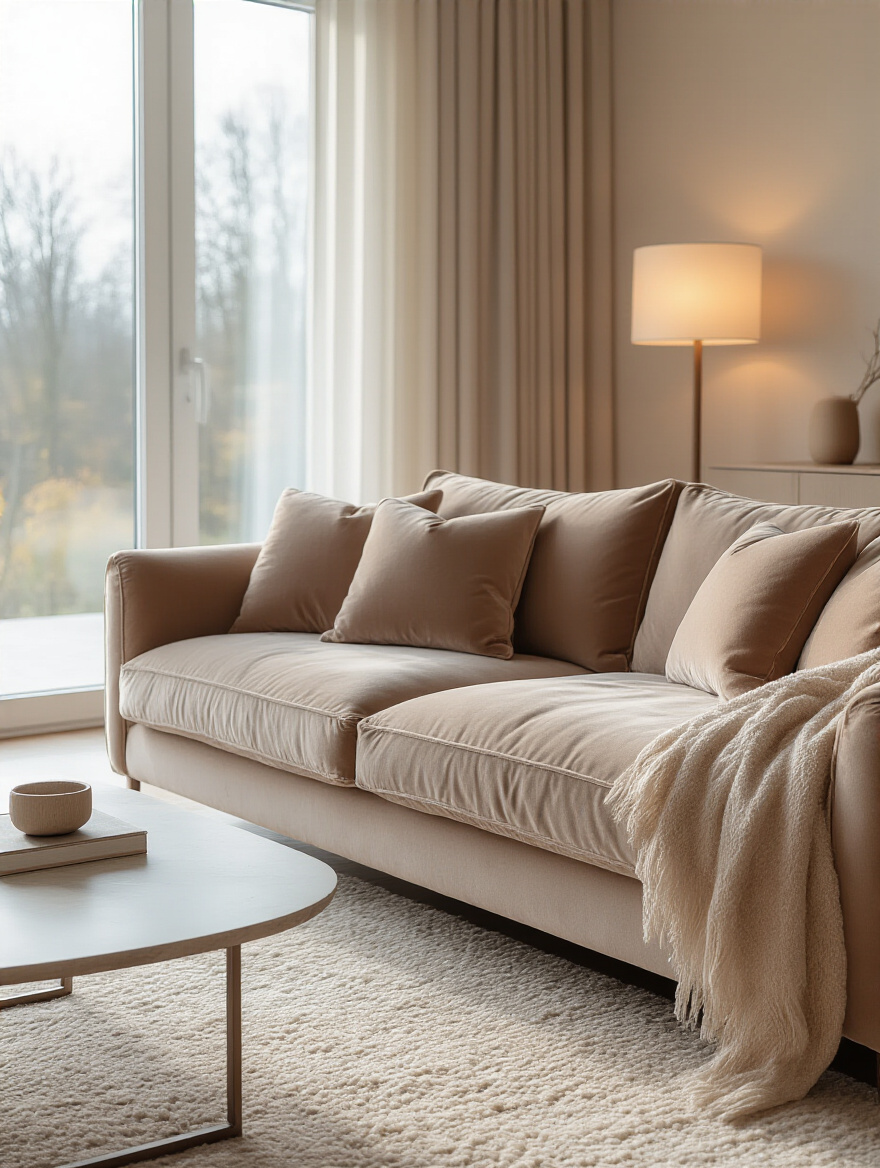
Here’s the shortcut everyone misses: look for performance fabrics. Brands like Crypton and Sunbrella make textiles that are water-resistant, stain-resistant, and odor-resistant. A client of mine with two giant, drooly Newfoundlands got a Crypton sofa, and it was a game-changer. Spills bead up instead of soaking in. Muddy paw prints wipe away with a damp cloth. Even better? Find a sofa with removable, machine-washable cushion covers. It’s your ultimate insurance policy against, well, life.
With the right seating in place, every other element we add will just enhance the comfort you’ve already established.
Crafting Warmth Through Core Elements and Thoughtful Selections (Part 1)
Now that we have our foundation, let’s build on it. These next few pieces are the workhorses of a cozy room. They’re not just accents; they’re functional elements that add layers of warmth, safety, and personality, turning a planned space into a lived-in home.
6. Strategically Place Area Rugs to Zone and Add Softness Underfoot
A rug is what defines a space. It anchors your furniture and says, “This is the spot for gathering and relaxing.” Without one, furniture feels like it’s floating aimlessly. But the wrong rug is a pet owner’s worst nightmare. Those super high-pile shag rugs? They’re a trap for fur, dirt, and whatever your pet decides to chew up. They’re also impossible to clean.
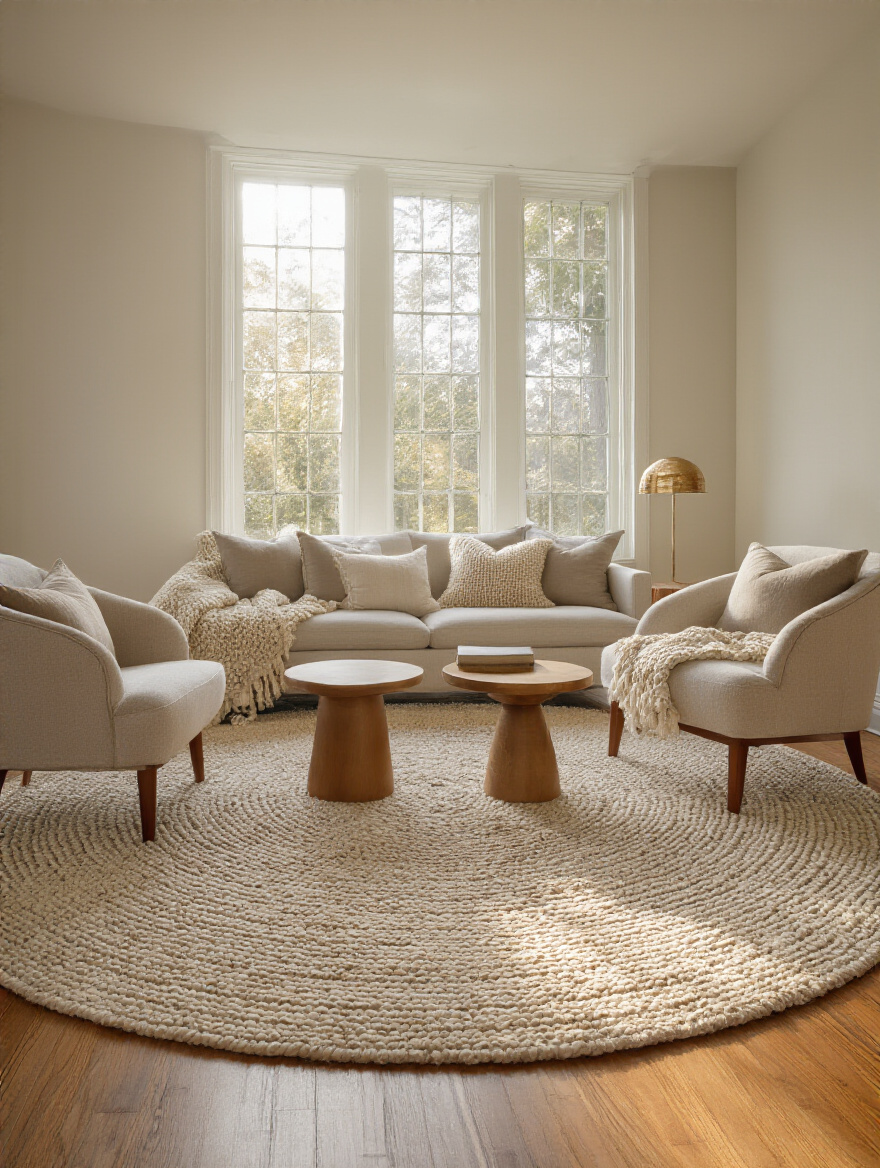
Go for low-pile rugs made from wool or synthetics like polypropylene. Wool is naturally durable and has lanolin, which helps repel stains and liquids initially, giving you a fighting chance to clean up spills. Tightly woven flatweaves are also fantastic and very stylish. Whatever you choose, do not skip the rug pad. It not only keeps the rug from slipping—which is crucial for a dog chasing a toy at full speed—but it also adds an extra layer of cushy softness underfoot.
This simple addition grounds your space and sets the stage for even more comfort.
7. Optimize Lighting with Dimmers and Multiple Light Sources
Lighting is everything. One harsh, overhead light—what I call the “interrogation lamp”—makes everyone feel exposed and on edge. Cozy lighting is all about layers. You need multiple sources of light at different heights: a floor lamp here, a table lamp there, maybe some wall sconces. And every single one should be on a dimmer. Dimmers are non-negotiable. They allow you to shift the mood from bright and functional to low and tranquil in an instant.
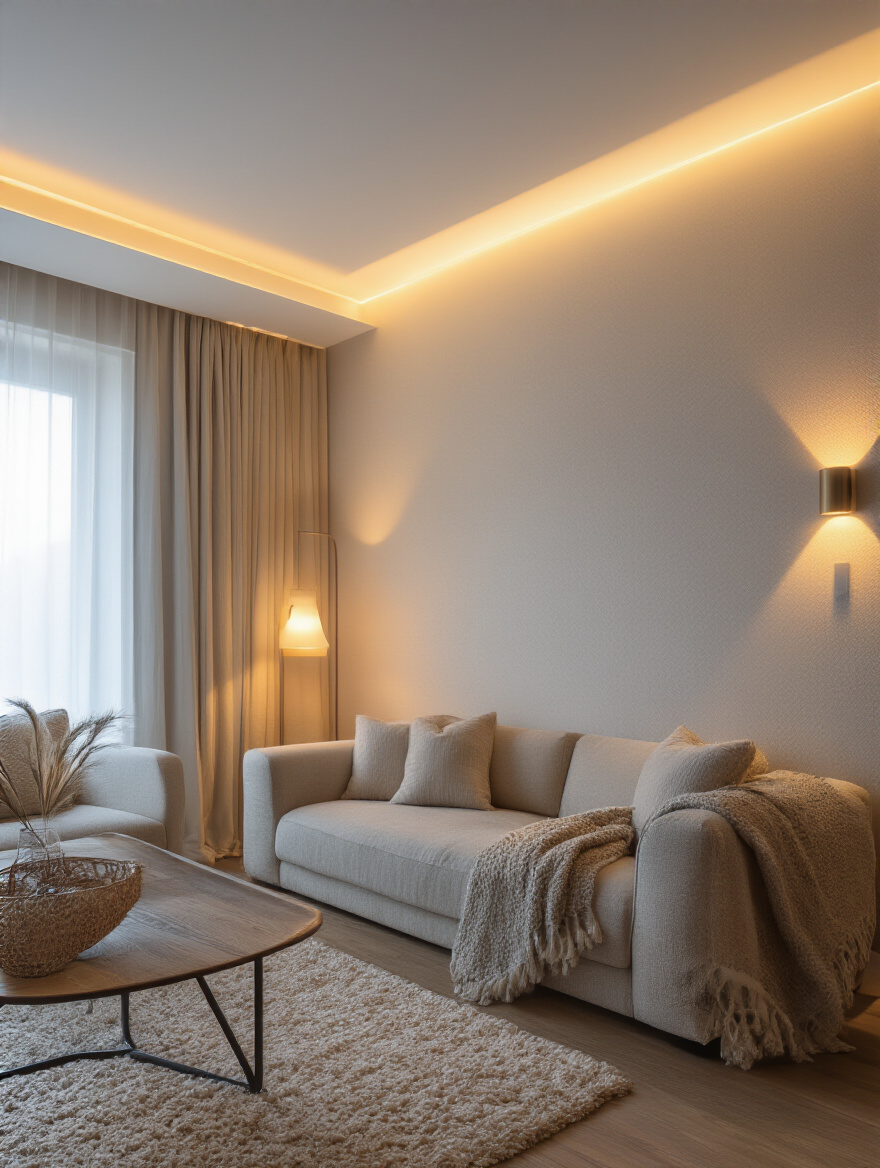
From a safety perspective, let’s talk about lamps. Avoid those tall, wobbly floor lamps with heavy shades if you have a rambunctious pet. A client’s playful Labrador once took out a pricey floor lamp during a game of fetch. Wall sconces are a brilliant, pet-proof alternative that frees up floor space. And always, always tuck away or secure cords. They are a massive chewing and tripping hazard.
With your lighting sorted, you can highlight all the lovely textures and colors we’re about to bring in.
8. Select Furniture that Balances Style with Snuggle-Factor
The “snuggle-factor” is a real design metric in my book. It’s the difference between a chair that looks good and a chair you actually want to sink into with a book and a purring cat on your lap. When shopping, physically sit on everything. Is the seat deep enough to curl your legs up? Are the arms comfortable?

And think about your pets’ needs. A beautiful, sleek armchair is great, but can your senior dog climb into it? Maybe you need a stylish ottoman nearby that can double as a step. I love rounded furniture—waterfall coffee tables, sofas with curved backs—because they feel softer, more organic, and are safer for pets and kids running around. It’s about finding pieces that invite you in, not just ones that are pretty to look at from a distance.
Once your main furniture feels like a warm embrace, we can add the final, character-filled touches.
9. Introduce Natural Wood Accents for Organic Warmth and Character
In a world of flat-pack furniture and synthetic materials, natural wood is grounding. It brings a piece of the outdoors in and adds a layer of warmth and history that nothing else can. A solid wood coffee table, a floating shelf made of reclaimed wood, or even a beautiful wooden bowl can make a room feel more authentic and lived-in.
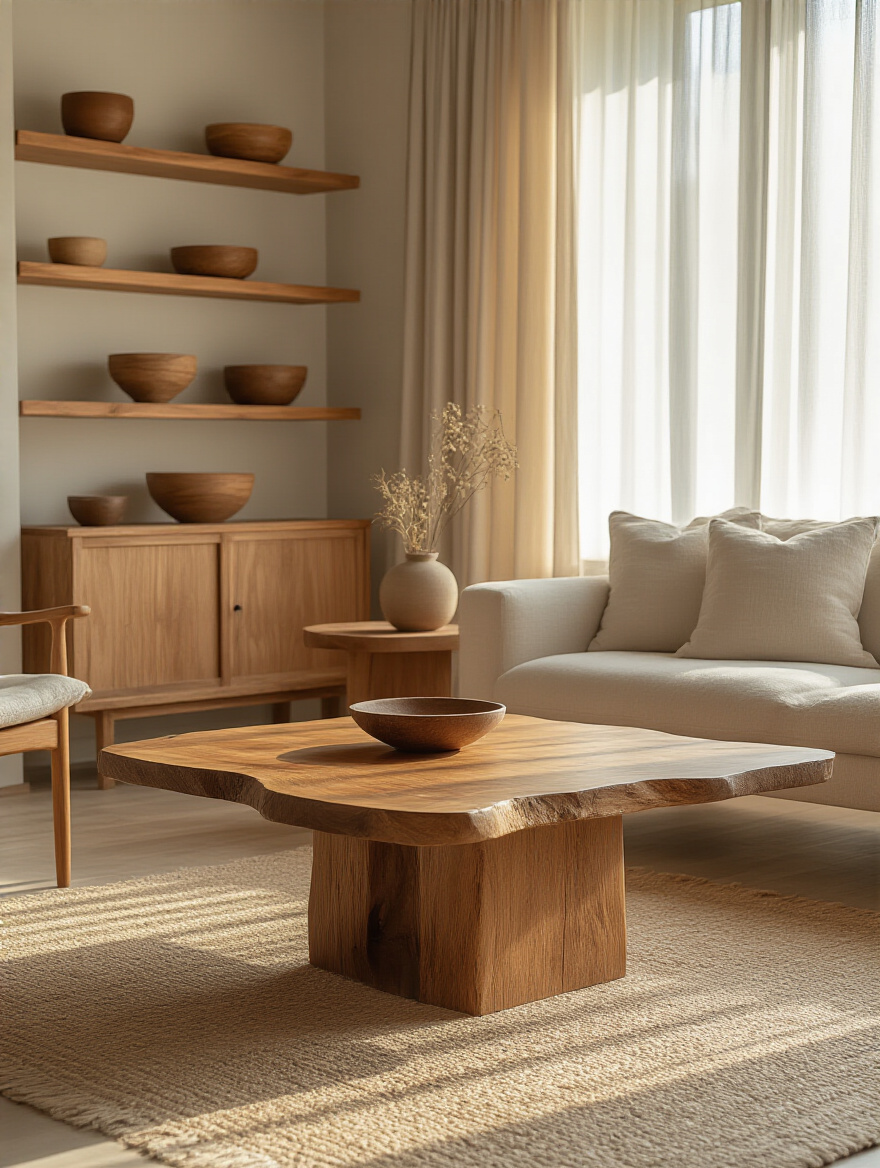
My pro-tip for pet owners: choose wood with a distressed or matte finish. A super glossy, perfect surface will show every single scratch from a claw or a dropped toy. A rustic or reclaimed piece, on the other hand, comes with its own “imperfections,” so any new dings or scratches just add to its character. They tell the story of your life, pets included.
These natural touches prevent a room from feeling too sterile and pave the way for a more personal atmosphere.
10. Integrate Soft Window Treatments for Privacy and Insulation
Bare windows can feel cold and exposed. Soft window treatments like drapes or Roman shades add another layer of texture, insulate the room, and make it feel more private and enclosed—in a good way. They literally soften the hard edges of your window frames.
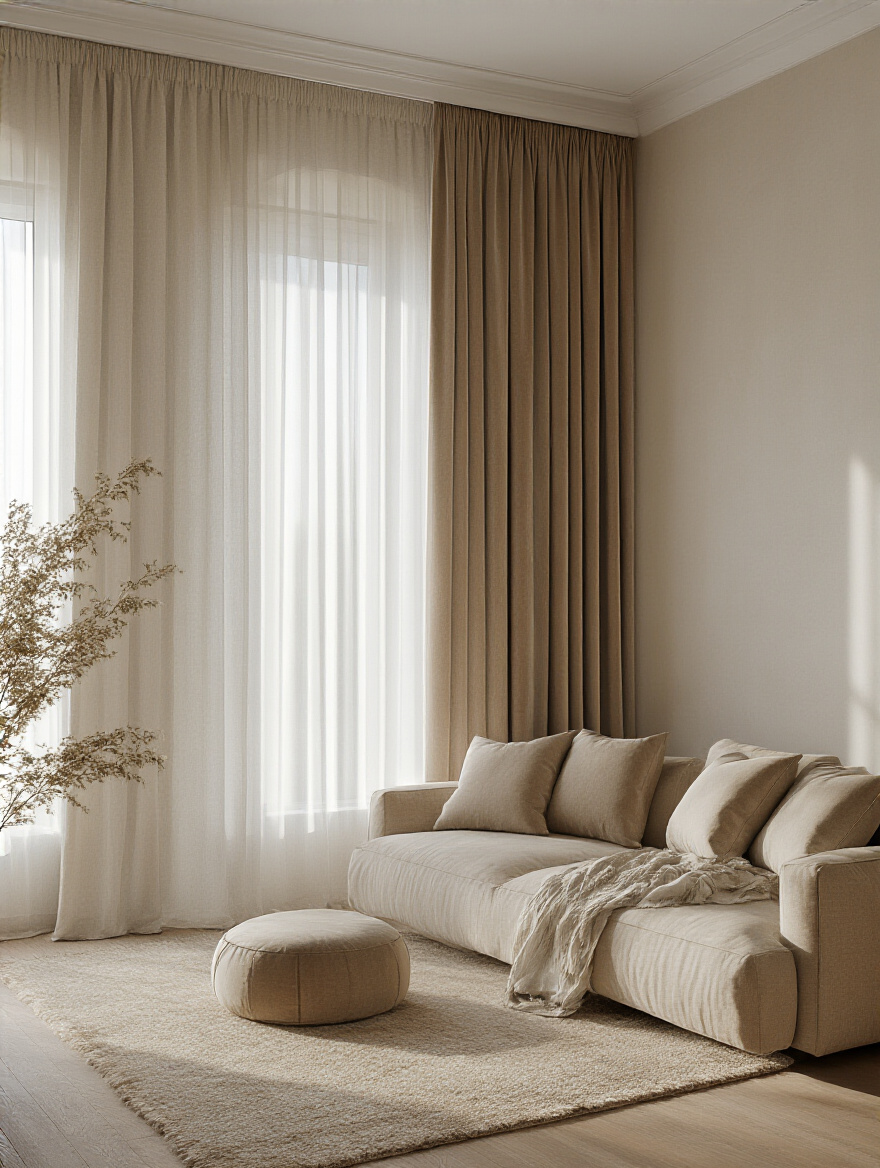
Now, a critical vet tech safety PSA: GET RID OF CORDED BLINDS. The dangling cords are a serious strangulation hazard for cats and puppies who love to play with anything that swings. I’ve heard too many horror stories. Opt for cordless blinds, shutters, or simple curtains on a rod. If you have a cat who is a determined climber, avoid puddling drapes and choose shades or curtains hemmed to just above the floor instead.
This step is about adding that final layer of softness while ensuring your pet’s absolute safety.
11. Design a Functional Yet Inviting Fireplace or Faux Hearth focal point
A fireplace is the ultimate symbol of cozy. It’s a natural gathering spot that draws you in with its warmth and light. Even if you don’t have a functional one, you can create the same effect. An electric fireplace insert gives you the ambiance (and sometimes even heat) without any of the mess or risk. You can even create a faux hearth by stacking birch logs in a fireplace opening and filling it with fairy lights or flameless candles.
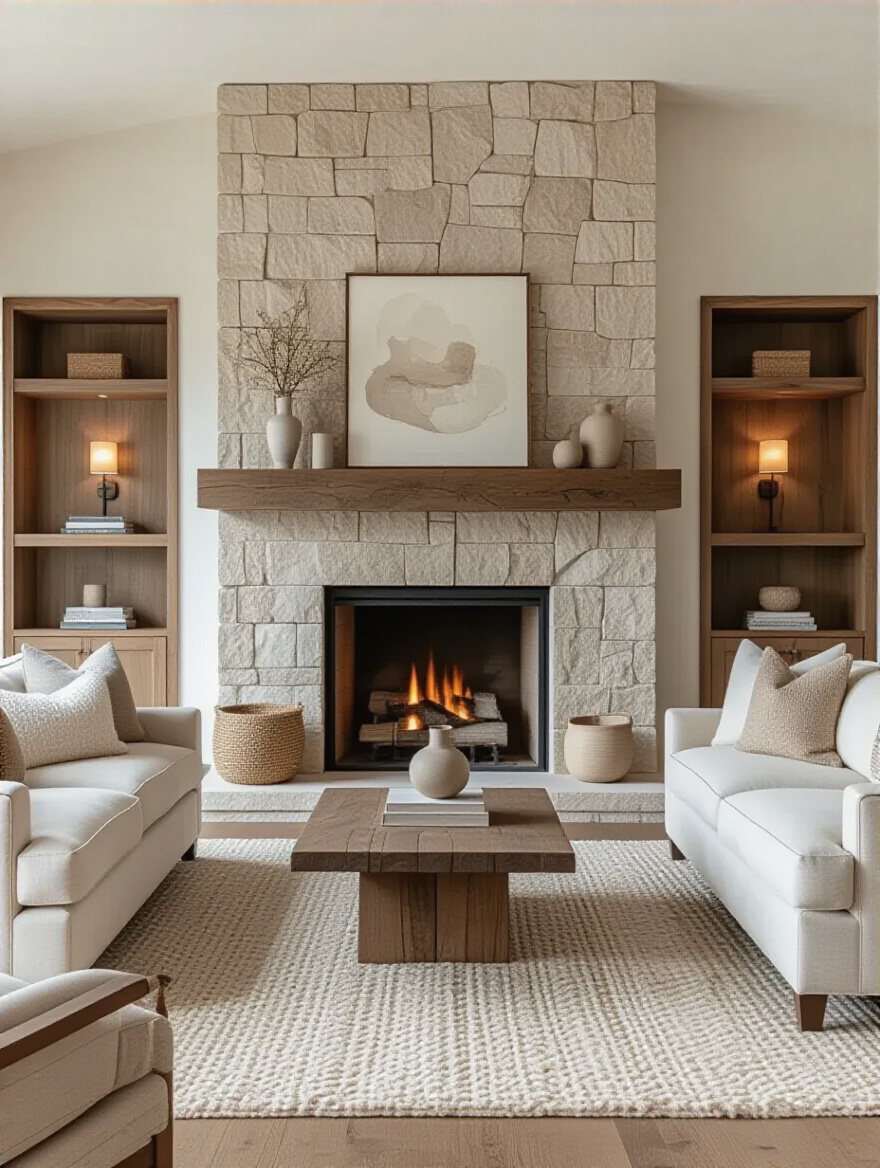
If you do have a real fireplace, a sturdy, secure screen is an absolute must to protect curious pets from sparks and embers. Never leave a fire unattended with pets in the room. The goal is to create a beautiful, warm focal point that serves as the heart of the room, drawing everyone in to relax together.
This central point of warmth naturally encourages you to add more personal and decorative layers around it.
Elevating Comfort with Intentional Styling and Personal Touches (Part 1)
This is the fun part. We’ve built the cozy bones of the room, and now it’s time to infuse it with personality and life. These are the small, intentional details that make a space feel uniquely yours.
12. Curate Thoughtful Throw Pillows and Blankets for Texture and Color
Throw pillows and blankets are the easiest, most affordable way to change up the vibe of a room. They’re your chance to play with color, pattern, and even more texture. The number one rule for pet parents? Make sure the covers are removable and machine-washable. No exceptions.
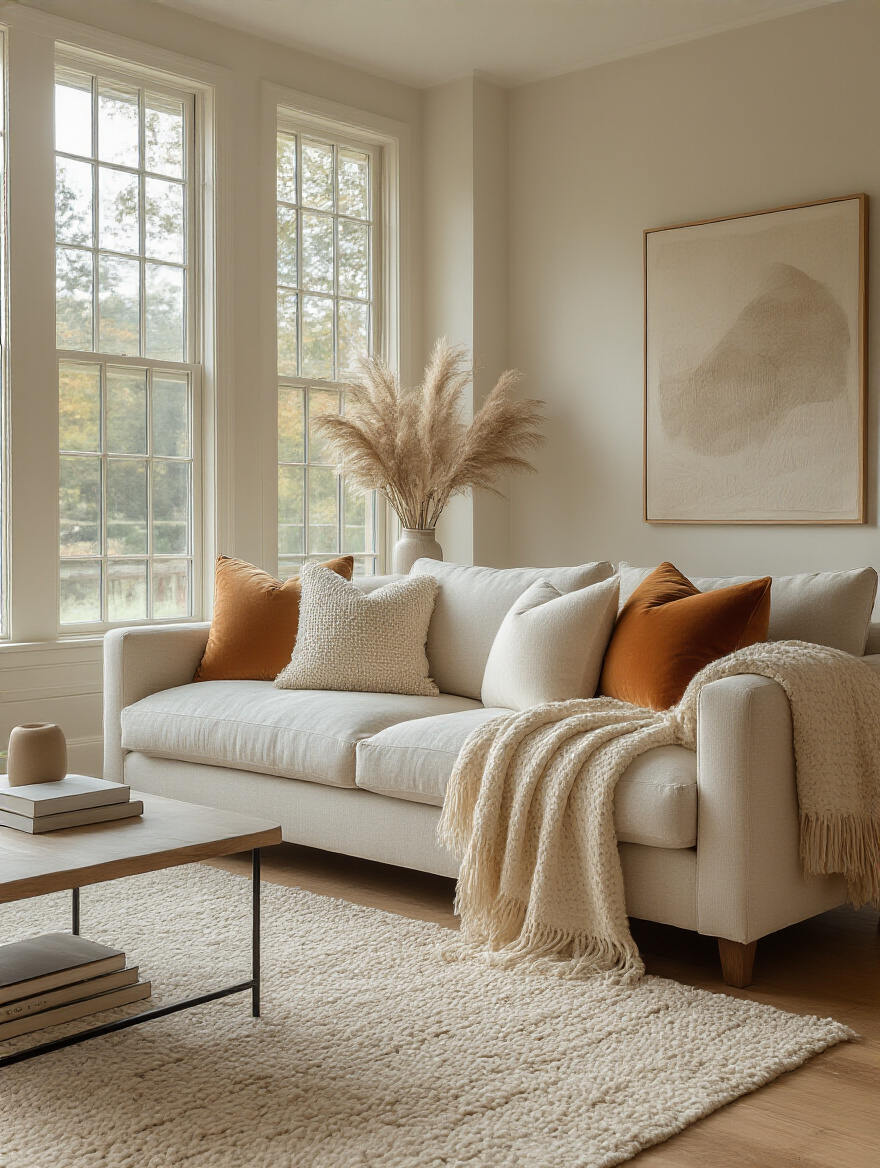
I like to create a designated “pet spot” on the sofa with a specific, ultra-durable and washable blanket. This subtly encourages them to cuddle up on that blanket, which protects your sofa upholstery. Don’t be afraid to mix and match! Combine a velvet pillow with a linen one and a chunky knit throw. This layered approach is what looks so effortlessly stylish in magazines.
These soft touches are where the room really starts to feel plush and inviting.
13. Infuse Greenery: Add Live Plants for Life and Air Quality
Plants breathe literal life into a room. They purify the air, add an organic shape, and connect us to nature. But here’s where my vet tech brain screams: so many common houseplants are toxic to pets. Lilies are deadly to cats. Sago palms are extremely poisonous to dogs. Fiddle leaf figs, monsteras, and pothos can all cause stomach upset if chewed on.

But don’t despair! There are tons of stunning, pet-safe options. Spider plants, Calatheas (like the prayer plant), Boston ferns, and the Cast Iron plant are all beautiful and non-toxic. Always double-check any plant on the ASPCA’s toxic plant list before bringing it home. You can have your lush, green oasis and keep your furry friends safe.
This living decor brings an energy to the space that nothing else can.
14. Personalize with Meaningful Art and Cherished Family Photos
This is your home. It should tell your story. A room with generic, mass-produced art from a big box store will never feel as personal or cozy as one filled with items you truly love. Frame photos from your travels, your wedding, or just candid snaps of your pets being their goofy selves. A gallery wall is a fantastic way to display a collection of smaller pieces.

Just make sure everything is hung securely. I once saw a large, leaned piece of art get knocked clean over by a golden retriever’s wildly happy tail. Use proper picture hangers, not just a single nail, especially for heavier items. This is how you infuse a room with soul and make it a true reflection of the life lived within its walls.
Your personal story, displayed on the walls, makes the room undeniably yours.
15. Create Hygge-Inspired Vignettes with Candles and Decor
“Hygge” is that Danish concept of deep, soul-warming coziness. You can create this feeling by grouping objects into little “vignettes” on your coffee table or shelves. A stack of books, a small plant, and a beautiful object on a tray feels intentional and lovely. And candles are key.
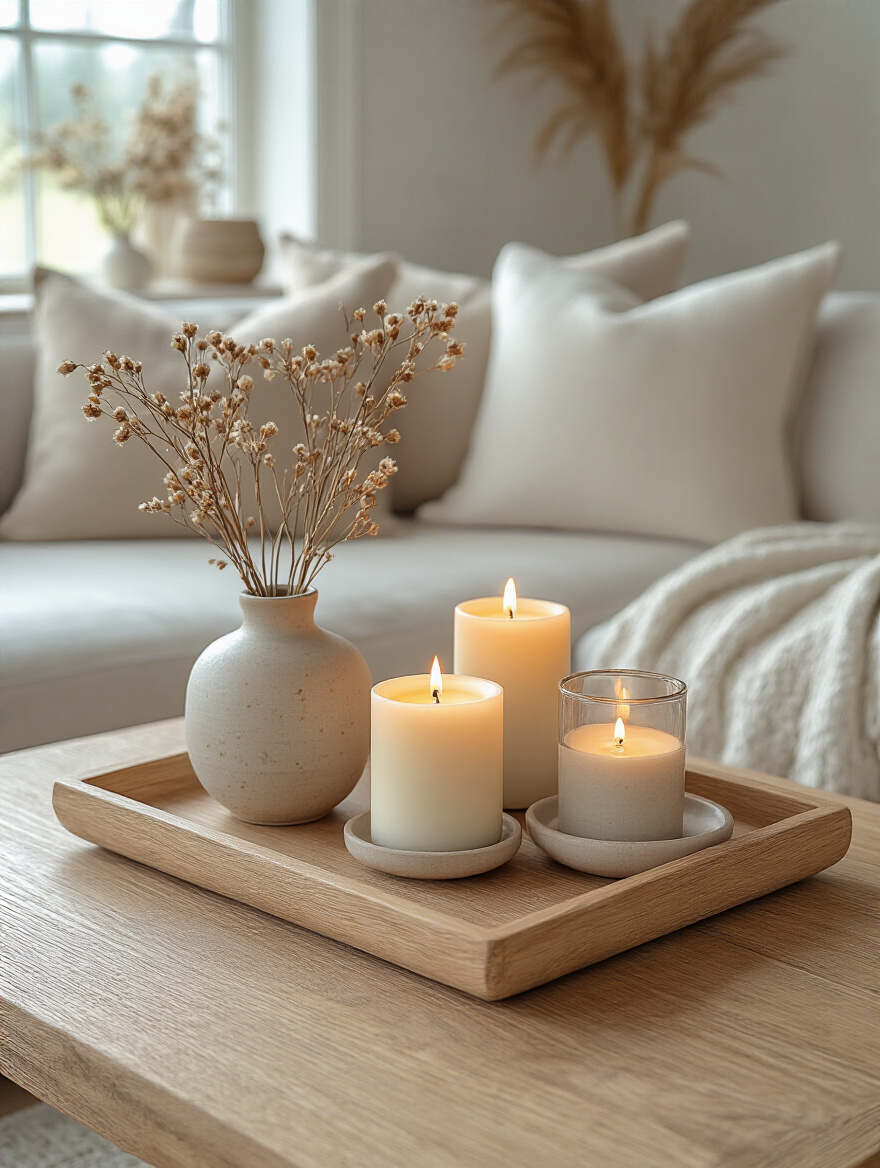
But with pets, open flames are a no-go. A curious cat can singe its whiskers, or a wagging tail can knock a candle over and start a fire in seconds. It is not worth the risk. Instead, invest in high-quality flameless LED candles. The good ones flicker and look incredibly realistic, giving you all the warm, gentle ambiance with none of the danger.
These small, curated moments of beauty are what transform a room into a sanctuary.
16. Incorporate Aroma: Utilize Diffusers or Scented Candles for Ambience
Scent is a powerful, often-forgotten element of design. The right aroma can make a room feel clean, calm, and incredibly cozy. Think warm vanilla, grounding sandalwood, or spicy cinnamon. However, many essential oils are toxic to pets, especially cats, when diffused. Tea tree, peppermint, citrus, and eucalyptus are just a few on the list to avoid.
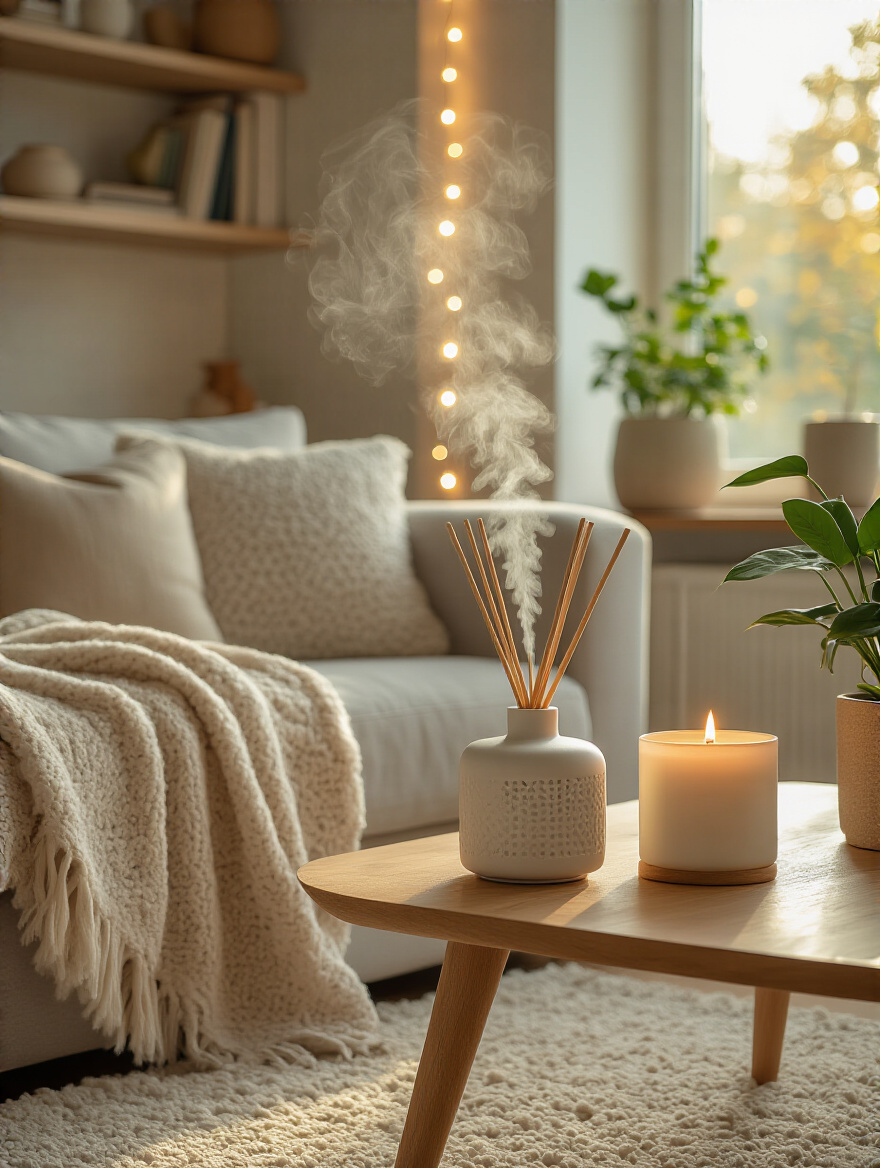
Before using a diffuser, check that every oil is safe for your specific pet. A safer bet? A simmer pot on the stove with water, orange peels, and cinnamon sticks, or a pet-safe scented candle from a brand that specifically formulates them to be non-toxic to animals. Scent makes a house feel like a home, and choosing one carefully ensures it’s a safe home for everyone.
With all senses engaged, we now turn to keeping this perfect cozy feeling alive for the long haul.
Sustaining Your Sanctuary: Advanced Cozy Maintenance and Optimization (Part 1)
You’ve created the perfect cozy space. Hooray! Now, how do you keep it that way? A sanctuary isn’t a one-and-done project. It requires thoughtful habits and smart systems to maintain that feeling of calm and keep the chaos of daily life from taking over.
17. Implement Smart Storage Solutions to Minimize Visual Clutter
Clutter is the enemy of cozy. Visual chaos creates mental chaos. The solution is smart, accessible storage. Every single thing in your living room should have a designated home, especially pet toys. No one feels relaxed when they’re tripping over a dozen squeaky toys.
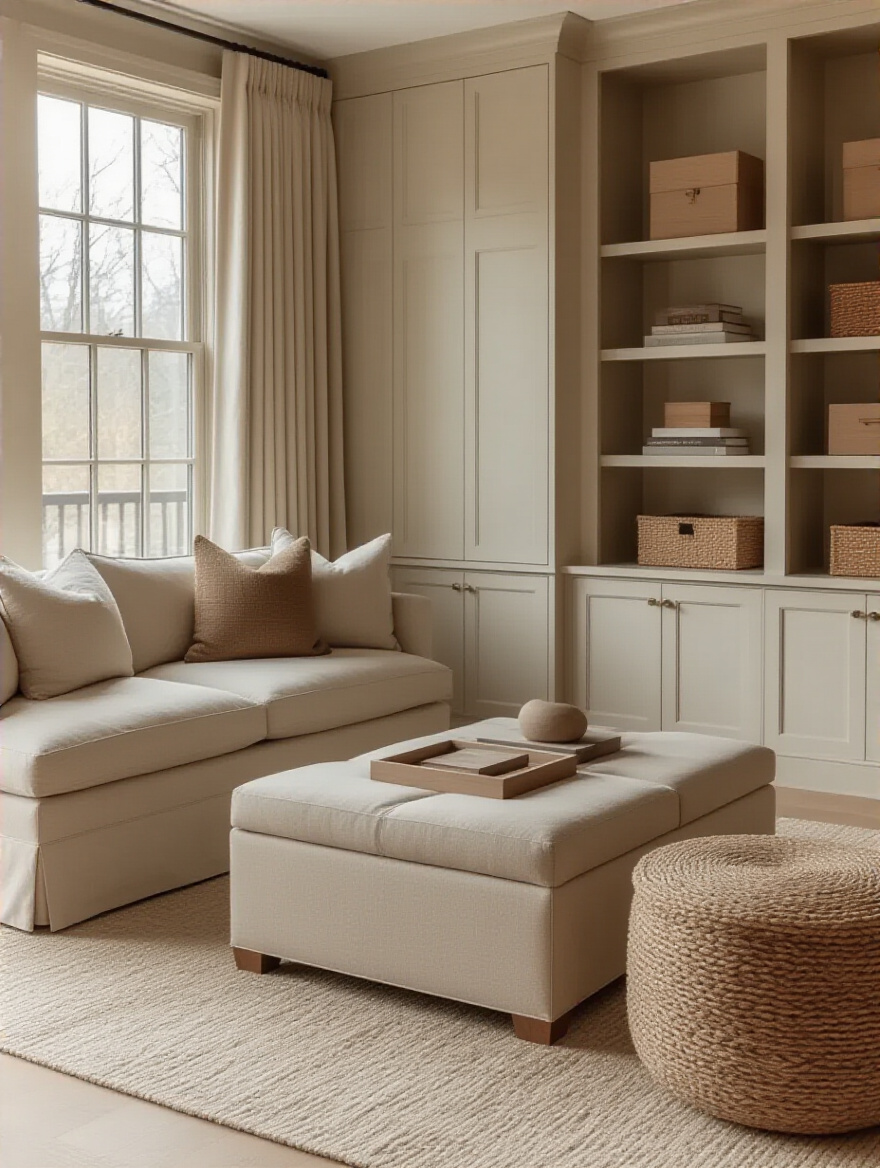
Get a stylish woven basket or a storage ottoman where all the pet toys can be tossed at the end of the day. This is a game-changer. Use cabinets with doors instead of open shelving for things like electronics, mail, and other daily clutter. The goal isn’t to get rid of your stuff; it’s to give it a place to live so your surfaces can stay clear and your mind can stay calm.
Keeping things tidy is the first step in preserving the peaceful atmosphere you’ve built.
18. Rotate Seasonal Decor to Refresh Your Cozy Vibe Effortlessly
Just like you change your wardrobe, changing your decor with the seasons keeps your home feeling fresh and alive. This doesn’t have to be a huge production. In the fall, swap out your light linen pillows for rich velvet ones and a wool blanket. In the spring, bring in some fresh flowers and lighter colors.
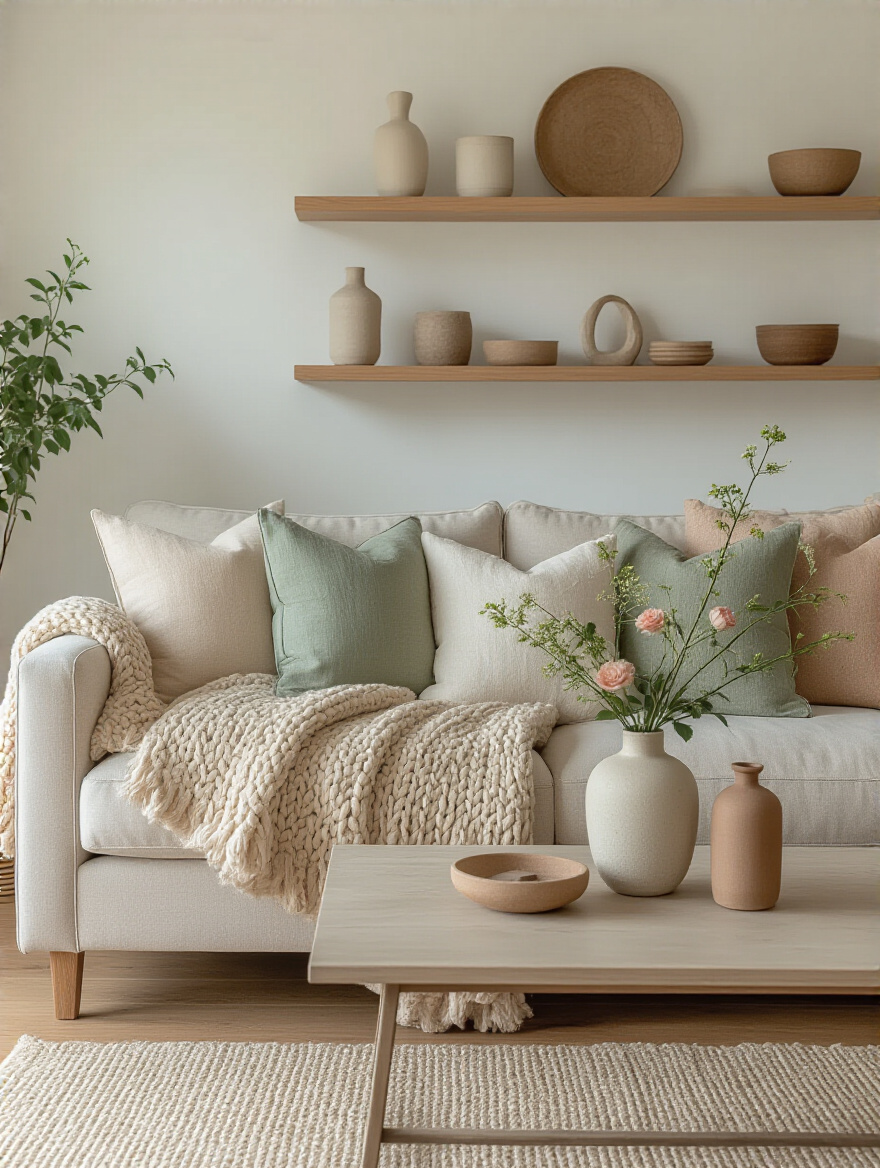
For pet owners, this is also a great time to do a safety check. When you pull out holiday decor, remember that things like tinsel, small ornaments, and some seasonal plants (like Poinsettias and Mistletoe) can be dangerous if ingested by pets. Rotating your decor keeps your space interesting and gives you a regular opportunity to ensure it remains a safe environment.
This simple habit keeps your sanctuary from ever feeling stale or static.
19. Perform Regular Textile Care for Enduring Softness and Freshness
Those beautiful, cozy textiles we added need a little love to stay beautiful and cozy. Set a routine for washing your blankets and pillow covers. Vacuum your upholstery and rugs weekly, using a rubber-edged tool or a squeegee to get up stubborn pet hair. Seriously, a squeegee on fabric is magic.
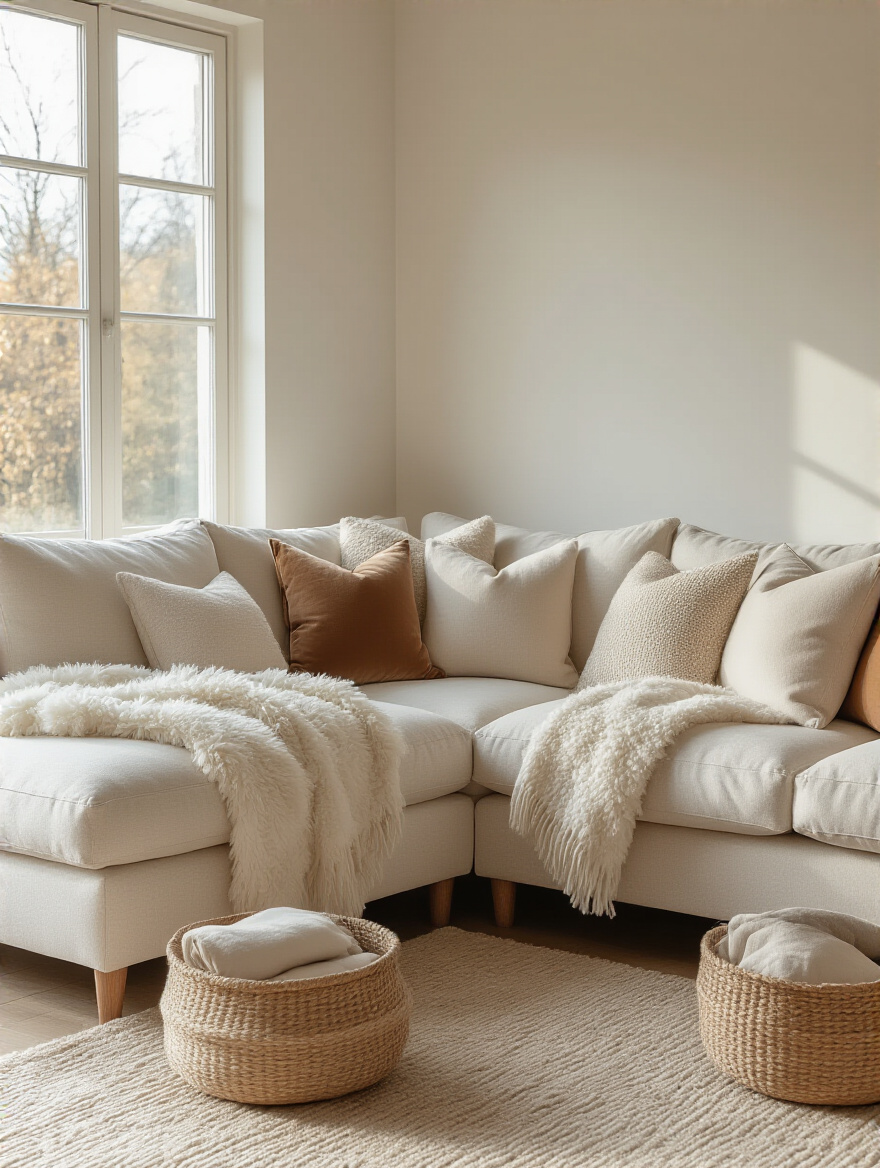
For inevitable stains, act fast. Keep a good, pet-safe spot cleaner on hand (I love enzyme cleaners like Nature’s Miracle for organic messes). Regular maintenance prevents dirt and odors from building up, which keeps your fabrics soft, your air fresh, and your living room feeling like the clean, comfortable haven it’s meant to be.
Maintaining your textiles ensures the tactile comfort of your room never fades.
20. Optimize Sound with Acoustic Panels or Soft Furnishings for Tranquility
Have you ever been in a room with a lot of hard surfaces where every sound echoes? It’s unsettling. Sound plays a huge role in how peaceful a space feels. Luckily, all those cozy elements we’ve already added—rugs, drapes, upholstered furniture, pillows—are fantastic sound absorbers.
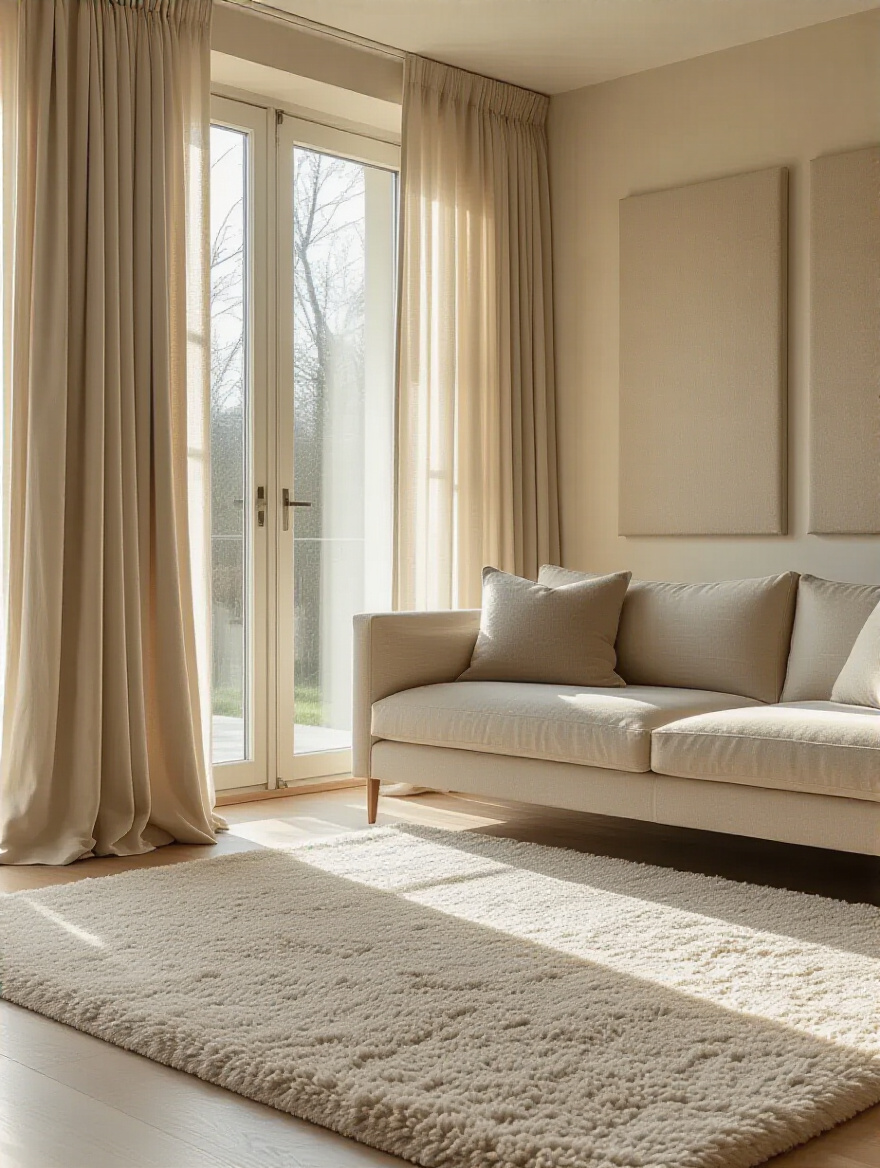
This is especially important for pets who are sensitive to noise. If you have a dog that’s terrified of thunderstorms or fireworks, creating a room with soft surfaces that muffle outside sounds can make them feel significantly safer. For rooms that still feel echoey, you can buy beautiful acoustic panels that look like art to hang on the walls. Creating a quiet, calm auditory environment is a next-level cozy move.
Fine-tuning the acoustics is like putting the final, invisible layer of comfort on your space.
Sustaining Your Sanctuary: Advanced Cozy Maintenance and Optimization (Part 2)
We’re at the final, most personal stage. This is about going beyond general comfort and creating spaces within your space that cater to deep, personal relaxation. This is how you ensure your living room isn’t just a cozy place to be, but a true escape that restores your energy.
21. Create a Dedicated Cozy Corner for Ultimate Relaxation and Escape
Within your cozy living room, carve out one small spot that is a sanctuary-within-a-sanctuary. It could be a corner with a comfy armchair, a soft lamp, a small side table for a cup of tea, and a basket of your favorite books. This is your spot. But it can also be a spot for your pet.
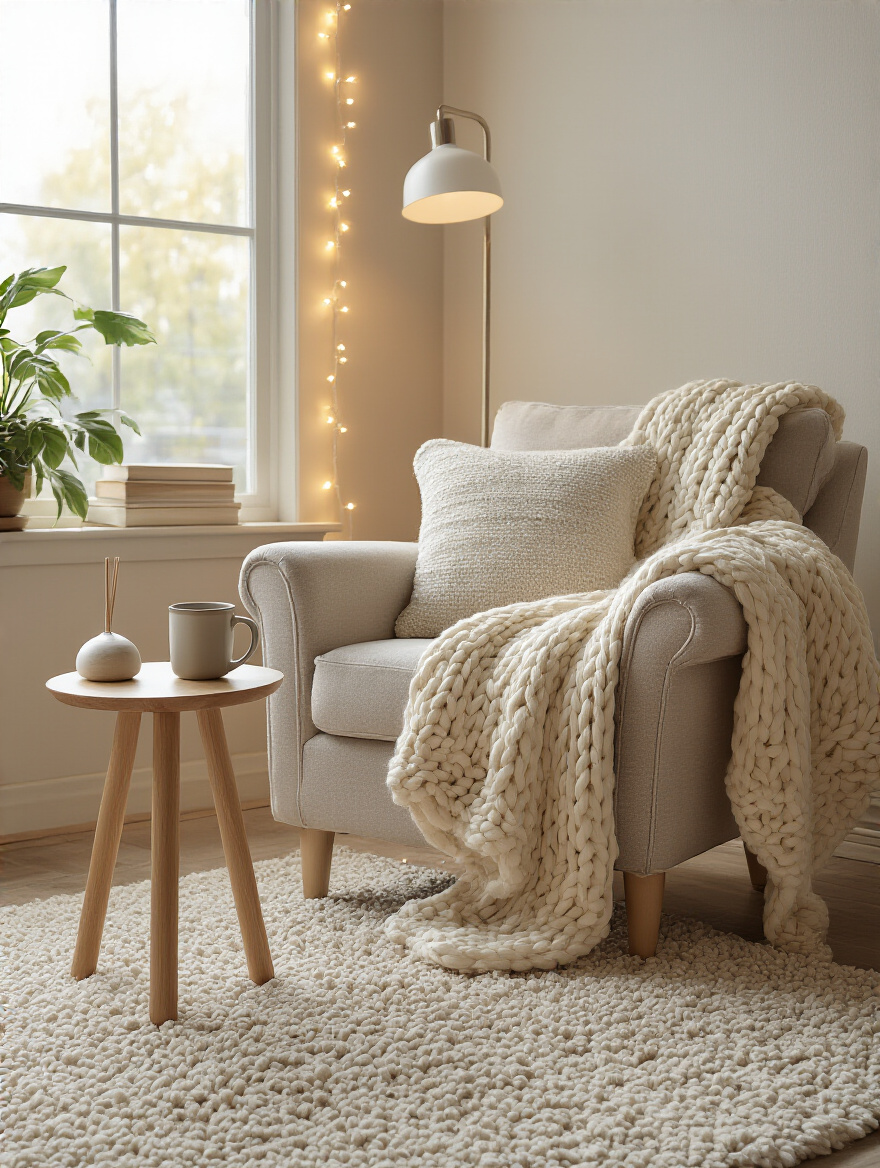
My favorite thing to do for clients is to create a “den” for their dog or a “perch” for their cat that blends seamlessly with the decor. Find a stylish dog bed that matches your aesthetic and place it in a quiet corner next to your reading chair. Install a chic, wall-mounted cat bed in a sunny spot. Giving your pet their own designated safe, cozy spot in the room reinforces that this space belongs to them, too. It’s the ultimate expression of a home built for the whole family.
Conclusion
See? You absolutely do not have to choose between a home you love and a pet you adore. Creating a snug sanctuary is about making smart, compassionate choices. It’s about choosing a performance-fabric sofa not because it’s trendy, but because it means you can actually relax during movie night instead of worrying about spills. It’s about picking pet-safe plants that bring you joy without bringing you anxiety. Every choice, from your layout to your lighting, is an opportunity to say, “Everyone is safe and welcome here.”
The best part of this journey isn’t just the beautiful result. It’s the feeling you get when you see your dog snoring contentedly on the new rug, or your cat purring in a sunbeam in their designated cozy corner. That’s when you know you’ve done more than just decorate a room—you’ve built a home. The true value of a cozy living room is that it gives back, offering you and your beloved pets a soft place to land at the end of every single day. So go ahead, pick one of these ideas and start today. Your joyful, cozy, pet-loving home is waiting.
